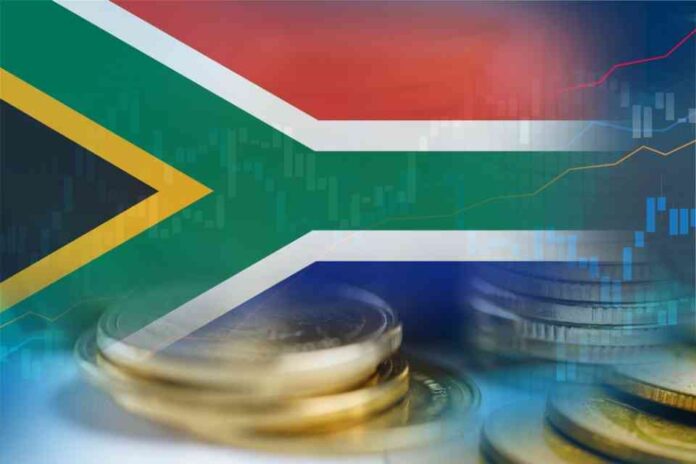South Africa, a nation boasting a vibrant and diverse economy, presents a stark and unsettling reality: a chasm of inequality so vast that it dwarfs almost any other nation on Earth. While the country's overall financial assets are growing, the distribution of this wealth is so skewed that it paints a picture of a nation fractured along lines of extreme economic disparity. The shocking statistics reveal a truth many would prefer to ignore: the richest 10% of the population control a staggering 85% of the nation's total net financial assets.
This isn't merely an academic observation; it's a reflection of a deeply entrenched societal problem with far-reaching consequences. The recent Allianz Global Wealth Report, a comprehensive analysis of the financial health of nearly 60 countries, shines a harsh light on this inequality. The report reveals that South Africa's net financial assets per capita have reached EUR 9,770 (R189,000), a figure that might suggest a degree of prosperity. However, this statistic is utterly meaningless when viewed in the context of the country's extreme wealth concentration.
The report highlights the fact that South Africa's financial assets grew by 8.3% in 2023, a significant rebound from the previous year's meagre 0.1% growth. This growth was largely driven by a 9.5% increase in insurance and pension funds, the dominant asset class for South African households, representing 49% of the total. Bank deposits and securities also saw growth of 7.5% and 7.0% respectively.
However, even this positive growth is tempered when adjusted for inflation, resulting in a more modest 2.2% increase. Despite this, the purchasing power of financial assets remains 12.3% higher than pre-pandemic levels in 2019.
While these figures might appear positive on the surface, the Allianz report underscores that the true picture is far more complex and troubling. The stark reality is that the benefits of this economic growth are not shared equitably.
The concentration of wealth in the hands of the richest 10% is not a new phenomenon; it's a persistent trend that has stubbornly resisted change for decades.
Imraan Valodia, Director of the Southern Centre for Inequality Studies at Wits University, provides further context to these alarming statistics. He points out that the top 0.01% of the population – a mere 3,500 individuals – own approximately 15% of the nation's wealth.
This concentration is further underscored by South Africa's Gini coefficient, a measure of income inequality, which stands at a shocking 0.67 in 2023 – the highest in the world. This figure starkly contrasts with the Slovak Republic, which boasts the lowest Gini coefficient globally at 0.29.
South Africa, a nation boasting a vibrant and diverse economy, presents a stark and unsettling reality: a chasm of inequality so vast that it dwarfs almost any other nation on Earth. While the country's overall financial assets are growing, the distribution of this wealth is so skewed that it paints a picture of a nation fractured along lines of extreme economic disparity. The shocking statistics reveal a truth many would prefer to ignore: the richest 10% of the population control a staggering 85% of the nation's total net financial assets.
This isn't merely an academic observation; it's a reflection of a deeply entrenched societal problem with far-reaching consequences. The recent Allianz Global Wealth Report, a comprehensive analysis of the financial health of nearly 60 countries, shines a harsh light on this inequality. The report reveals that South Africa's net financial assets per capita have reached EUR 9,770 (R189,000), a figure that might suggest a degree of prosperity. However, this statistic is utterly meaningless when viewed in the context of the country's extreme wealth concentration.
The report highlights the fact that South Africa's financial assets grew by 8.3% in 2023, a significant rebound from the previous year's meagre 0.1% growth. This growth was largely driven by a 9.5% increase in insurance and pension funds, the dominant asset class for South African households, representing 49% of the total. Bank deposits and securities also saw growth of 7.5% and 7.0% respectively. However, even this positive growth is tempered when adjusted for inflation, resulting in a more modest 2.2% increase. Despite this, the purchasing power of financial assets remains 12.3% higher than pre-pandemic levels in 2019.
While these figures might appear positive on the surface, the Allianz report underscores that the true picture is far more complex and troubling. The stark reality is that the benefits of this economic growth are not shared equitably. The concentration of wealth in the hands of the richest 10% is not a new phenomenon; it's a persistent trend that has stubbornly resisted change for decades.
Imraan Valodia, Director of the Southern Centre for Inequality Studies at Wits University, provides further context to these alarming statistics. He points out that the top 0.01% of the population – a mere 3,500 individuals – own approximately 15% of the nation's wealth. This concentration is further underscored by South Africa's Gini coefficient, a measure of income inequality, which stands at a shocking 0.67 in 2023 – the highest in the world. This figure starkly contrasts with the Slovak Republic, which boasts the lowest Gini coefficient globally at 0.29.
The causes of this extreme inequality are multifaceted and deeply rooted in South Africa's history and socio-economic structures. Valodia highlights the crippling unemployment rate, currently at 33.5% according to Stats SA’s Quarterly Labour Force Survey, as a major contributor.
This leaves a significant portion of the population with little or no income, exacerbating the already vast disparities in wealth. He also points to the extraordinarily high incomes at the top end of the income distribution, noting that the wealthiest 10% of households account for a staggering 52% of all expenditure, while the poorest 10% contribute a mere 0.8%.

Data from JustShare, focusing on income inequality within major JSE-listed companies, provides further evidence of this disparity. The report reveals the enormous gap between CEO compensation and the minimum wage, particularly in sectors like retail and wholesale – the country’s second-largest employer. The average CEO in this sector earns 597 times more than their lowest-paid employee. One striking example is Woolworths CEO Roy Bagattini, who earned R122 million in the 2023 financial year – over 1,300 times the company's internal minimum wage of R93,600.
In conclusion, the statistics presented paint a disturbing picture of South Africa's wealth distribution. While the nation's financial assets are growing, the benefits are overwhelmingly concentrated in the hands of a tiny elite. This extreme inequality is not simply a matter of economic disparity; it's a societal crisis with profound social, political, and economic consequences. Addressing this challenge requires a fundamental shift in policies and priorities, focusing on inclusive growth, job creation, and a fairer distribution of wealth. The statistics presented here serve as a stark reminder of the urgent need for meaningful change.
The causes of this extreme inequality are multifaceted and deeply rooted in South Africa's history and socio-economic structures. Valodia highlights the crippling unemployment rate, currently at 33.5% according to Stats SA’s Quarterly Labour Force Survey, as a major contributor.
This leaves a significant portion of the population with little or no income, exacerbating the already vast disparities in wealth. He also points to the extraordinarily high incomes at the top end of the income distribution, noting that the wealthiest 10% of households account for a staggering 52% of all expenditure, while the poorest 10% contribute a mere 0.8%.
Data from JustShare, focusing on income inequality within major JSE-listed companies, provides further evidence of this disparity. The report reveals the enormous gap between CEO compensation and the minimum wage, particularly in sectors like retail and wholesale – the country’s second-largest employer. The average CEO in this sector earns 597 times more than their lowest-paid employee. One striking example is Woolworths CEO Roy Bagattini, who earned R122 million in the 2023 financial year – over 1,300 times the company's internal minimum wage of R93,600.
In conclusion, the statistics presented paint a disturbing picture of South Africa's wealth distribution. While the nation's financial assets are growing, the benefits are overwhelmingly concentrated in the hands of a tiny elite. This extreme inequality is not simply a matter of economic disparity; it's a societal crisis with profound social, political, and economic consequences. Addressing this challenge requires a fundamental shift in policies and priorities, focusing on inclusive growth, job creation, and a fairer distribution of wealth. The statistics presented here serve as a stark reminder of the urgent need for meaningful change.











